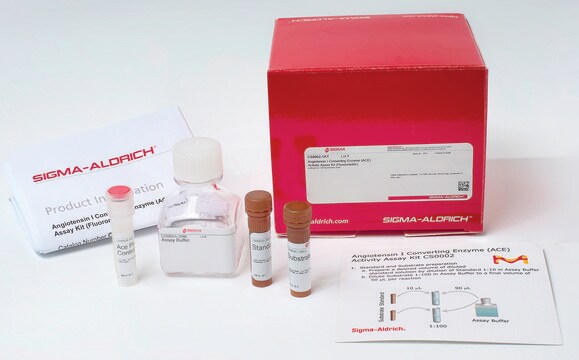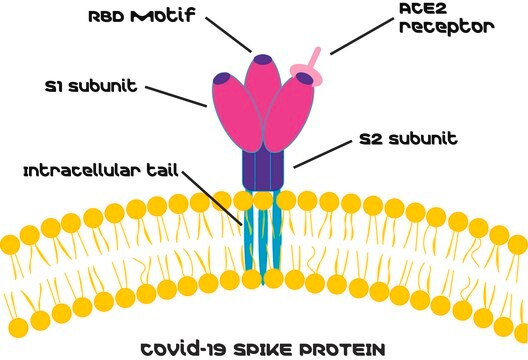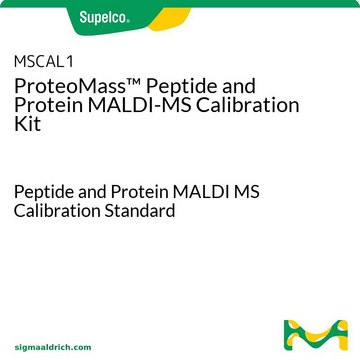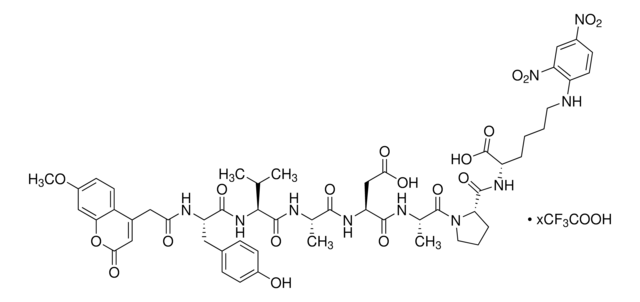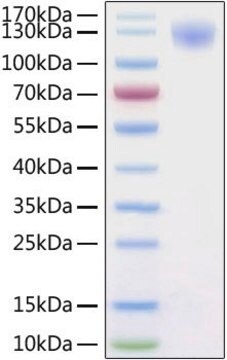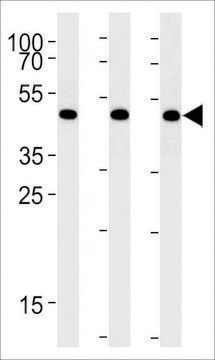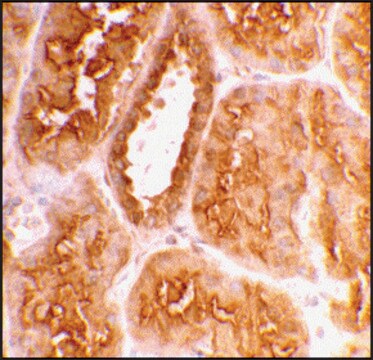SAE0064
Angiotensin Converting Enzyme-2, ACE2
Human recombinant, ≥1000000 U/mg, expressed in HEK 293 cells
Sinónimos:
ACE-related carboxypeptidase, ACE2, Angiotensin-converting enzyme homolog (ACEH), COVID-19 receptor, Coronavirus receptor, Metalloprotease MPROT15
About This Item
Productos recomendados
biological source
human
Quality Level
100
200
recombinant
expressed in HEK 293 cells
assay
≥95% (SDS-PAGE)
form
lyophilized powder
specific activity
≥1000000 U/mg
mol wt
~85.9 kDa by SDS-PAGE
impurities
≤1 EU/μg protein Endotoxin
UniProt accession no.
shipped in
ambient
storage temp.
−20°C
Gene Information
human ... ACE2(59272)
General description
Application
Biochem/physiol Actions
Unit Definition
Physical form
Certificados de análisis (COA)
Busque Certificados de análisis (COA) introduciendo el número de lote del producto. Los números de lote se encuentran en la etiqueta del producto después de las palabras «Lot» o «Batch»
¿Ya tiene este producto?
Encuentre la documentación para los productos que ha comprado recientemente en la Biblioteca de documentos.
Los clientes también vieron
Nuestro equipo de científicos tiene experiencia en todas las áreas de investigación: Ciencias de la vida, Ciencia de los materiales, Síntesis química, Cromatografía, Analítica y muchas otras.
Póngase en contacto con el Servicio técnico



